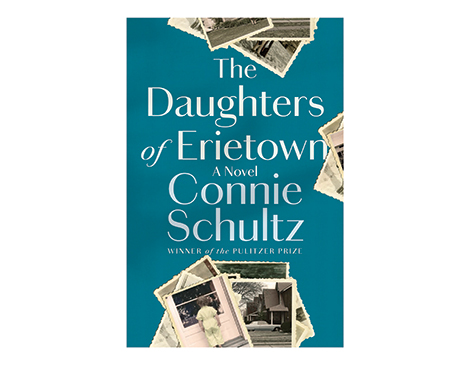Behind Connie Schultz's NEO-Inspired Debut Novel
by Kim Schneider | Jun. 8, 2020 | 12:00 PM

Lylah Rose Wolff
Connie Schultz has made a career out of telling heartfelt nonfictional tales, columns that show the compassion, nuance and overlooked magic in everyday life.
So when the Ashtabula native started writing her first novel, The Daughters of Erietown, 10 years ago, she wanted to capture some familiar, oft-ignored voices: those of working class, Midwest families. Set in a fictional Lake Erie town, the multigenerational tale follows flawed, relatable figures whose choices ripple beyond their years. It’s a story about women whose desires emerge in unassuming ways, a quiet kind of courage, though they might not know it.
“The only difference between these [working-class] families in many ways and wealthier families is that they just don’t have money to fix things when the big problems come. That really changes the trajectory of their lives,” says Schultz. Here, she dives into the stories behind The Daughters of Erietown.

Q: After writing two memoirs, what inspired you to write a novel and this story specifically?
A: I had read so much fiction [growing up] and there were so few books telling the story of the people’s lives that I knew, growing up as a working-class kid. It was a merger of two things I care a great deal about: people who come from harder backgrounds, but still have dreams, and women’s stories. I meet so many women who to me are quietly strong, quietly heroic in the things they are willing to endure, and things that they can prevail over. But I also wanted them to know it’s OK to have ambition, to be a woman with ambition. I’ve certainly been one of those.
Q: Why set your story in the Midwest?
A: It’s a small, working-class town on the shores of Lake Erie, written by a woman who grew up in a small, working-class town on the shores of Lake Erie. This being my first novel, it was important to include some of what I know to help me guide the story. It’s always interested me, the beginnings of my generation, what our mothers went through before and how we so want better for our daughters, but we sometimes interfere too much. Or we may have had such rough beginnings that we end up wanting our children to be our confidantes or saviors.
Q: Why was it important to touch on larger themes of feminism, race and gender equality and show their evolution over many generations?
A: When you include different generations, you include more readers in the story. If they can’t see themselves, they might see someone they knew or loved. They might learn something about themselves, that they hadn’t really given themselves credit for. Typically for women, I find that they’re stronger than they know.
Trending
-
1
-
2
-
3
-
4
-
5










